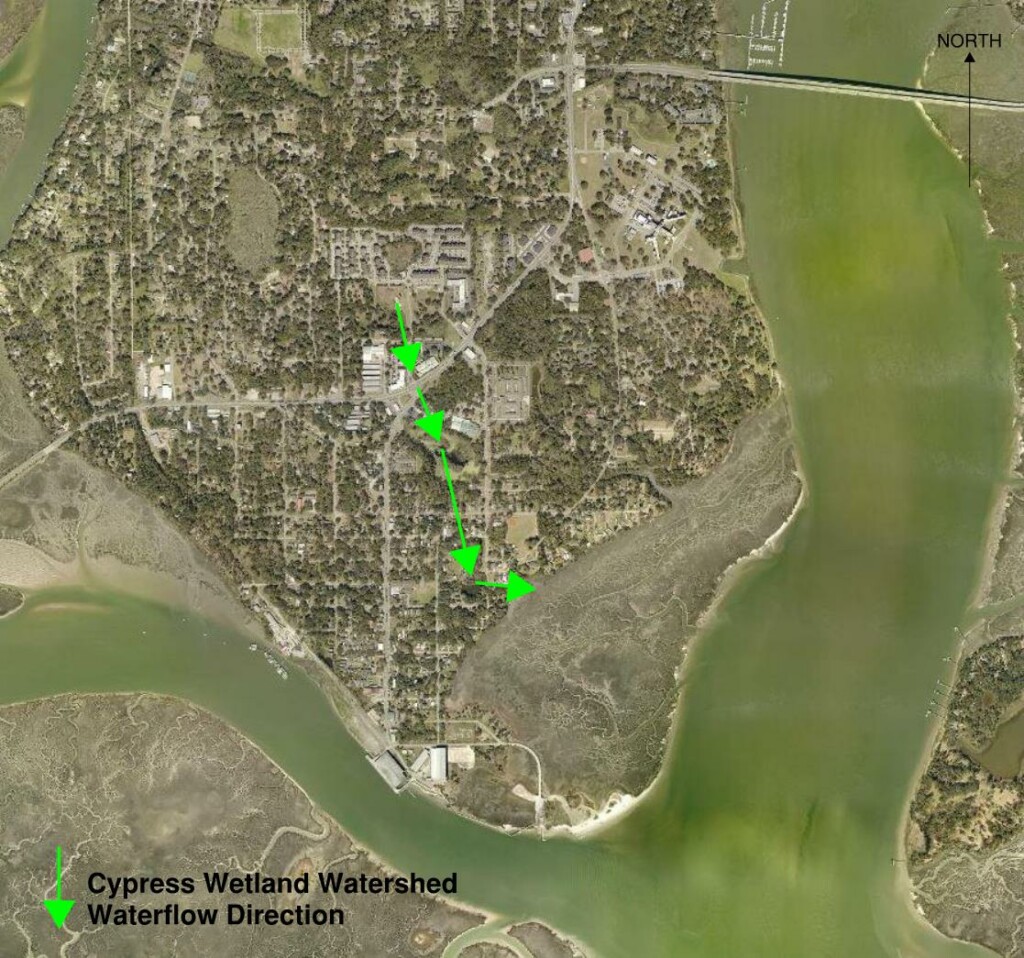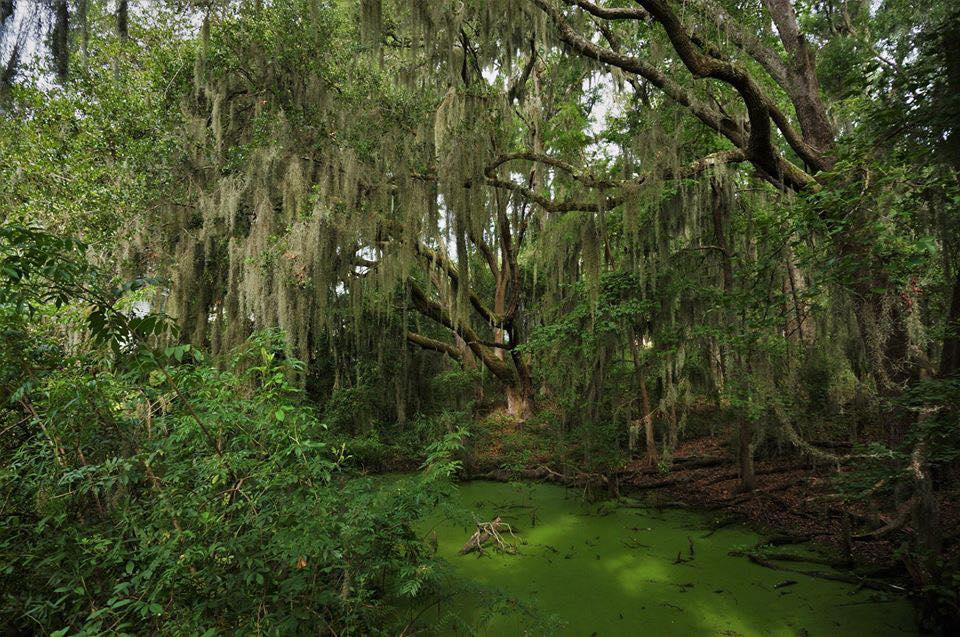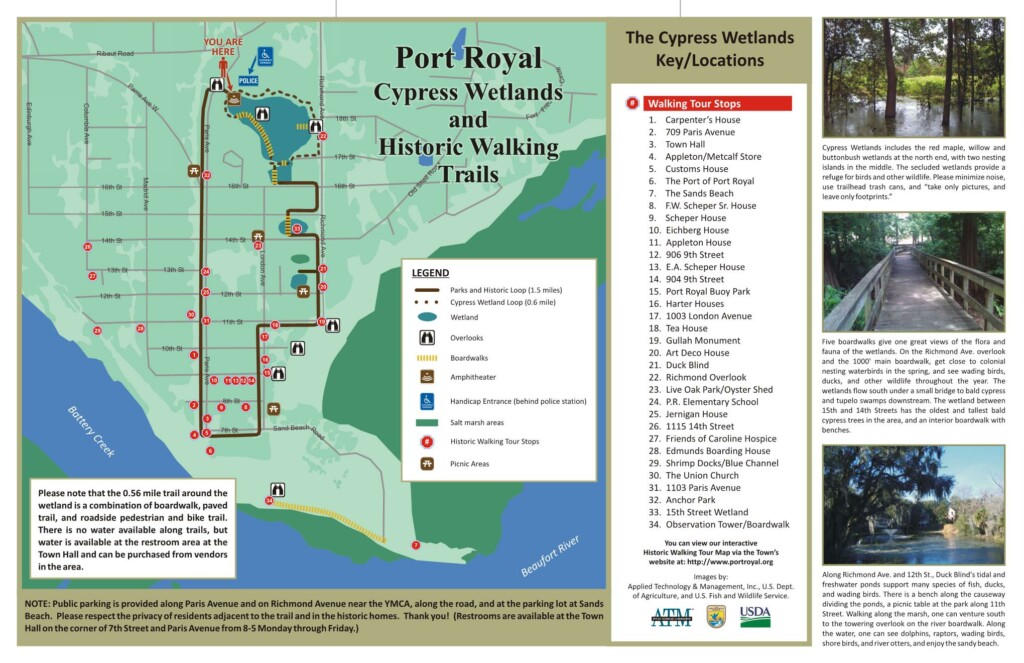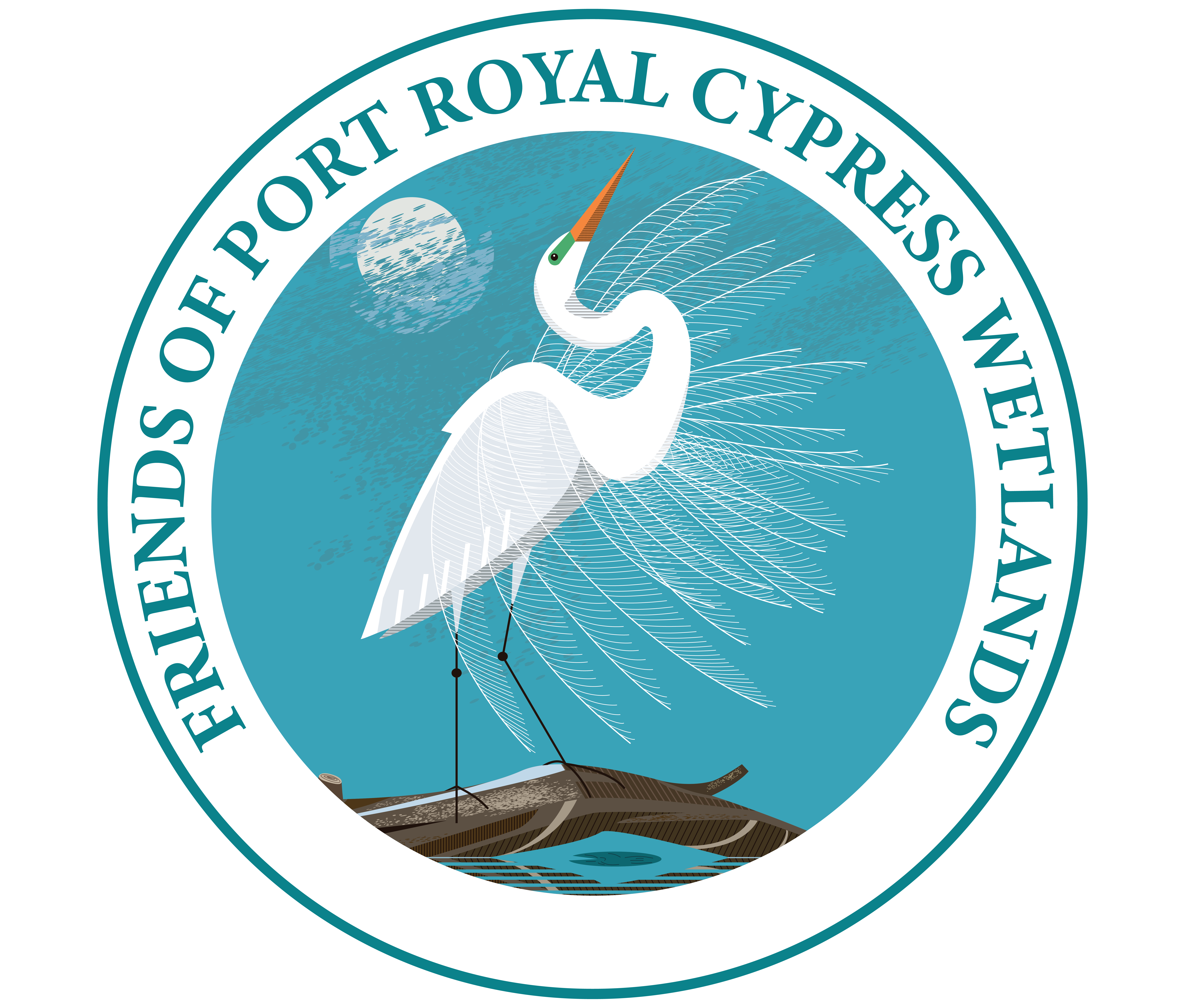Managing Stormwater
Clean water, good fishing, and outdoor watersports depend upon healthy rivers and wetlands. How can we protect our rivers and wetlands? We can start by managing stormwater. Stormwater is the water not absorbed into the ground during and after rain storms, which then flows over the land into nearby waters. Stormwater runs off from the streets, buildings, and lawns, and drains into the wetlands through culverts and natural waterways.

In this watershed, the water flows from north to south through a series of wetlands, ponds, and culverts to the Beaufort River and into Port Royal Sound. To restore the watershed, the Town of Port Royal installed pipes to connect wetlands that had been isolated by road construction, allowing more natural drainage conditions. To help nature improve the flood control and water quality functions of the wetlands, flashboards control water levels at each pond’s inlet and outlet.
The series of wetlands provide natural stormwater capture, retention, and treatment over the days that it takes the water to flow through the system. This improves the quality of the water that drains to the river and Port Royal Sound by trapping pollution, sediments, and excess nutrients. In turn, the habitats, fish and wildlife, shellfish beds, and ecosystems downstream also benefit.
Pollutants Removed in the Cypress Wetlands?
- Sediment from construction activities, upstream erosion and roadway runoff
- Excess Nutrients such as phosphorus and nitrogen from sediment and impervious area runoff
- Heavy Metals from vehicle wear and tear, corroding metal surfaces and outdoor storage of materials at industrial sites
- Bacteria from overflowing or leaking sanitary sewers, failing septic systems, wildlife and livestock waste and pet wastes not picked up by owners
- Oil and Grease/Petroleum Products from vehicle accidents, leaking vehicles, gas spills, oil containers left outside, improper disposal of oil/petroleum products and improper disposal of restaurant wast

Other Pollutants and Sources
- Fertilizers and Pesticides
- Per- and polyfluoroalkyl substances (PFAS)
- Soaps and Cleaning Supplies
- Uncured concrete from construction activities
- Leaking Dumpsters
- Pressure Washing Runoff containing all of the Pollutants mentioned above
- Illicit Dumping in Storm Drains including yard waste, rinsing of construction equipment, trash, etc.


Impacts of Pollution
- Bacterial and Viral Infections
- Drinking Water Contamination
- Pollution Buildup in Fish Tissue
- Eutrophication from excessive minerals and nutrients causes a dense growth of plant life and algae which decreases oxygen levels in the water to the point it can no longer sustain life
- Poor aesthetics potentially lowering property values
Benefits of Aeration
Depending on the day you’re strolling past the Duck Blind you may see one of the aeration systems active. Did you know these aerators are there for more than just aesthetic purposes? The aerators agitate and mix the water to help in the following ways…
- Balance the temperature through the water column, essentially removing the thermocline (or the transitional layer) between the warmer surface water and cooler deeper water. The aerators send the oxygen-deficient, cooler water from the deeper pools to the surface allowing them to retain adequate oxygen levels. Alternatively, the mixing sends the warmer, oxygen-rich waters to the bottom, keeping oxygen concentrations in the water at a healthy level to support beneficial bacteria growth. The constant mixing of the water helps reduce stratification, or layering of the water column, by maintaining water temperature throughout the year, keeping waters cooler in the summer and warmer in the winter.
- It greatly improves water quality by improving clarity, smell and oxygen concentrations. As the water circulates, oxygen levels are increased to adequate levels supporting healthy bacteria growth, restoring proper pH levels, reducing carbon dioxide and restoring the balance of nutrients such as phosphorus and nitrogen by allowing sediment to settle to the bottom.
- It helps reduces Mosquito activity because mosquitoes are deterred from laying their eggs in the agitated water, additionally as water quality improves and oxygen levels increase, the fish and other larvae-eating organisms begin to thrive.

Wetland Classification
The U.S. Fish and Wildlife Service currently has three wetland classification codes for the Port Royal Cypress Wetlands. An image from the National Wetlands Inventory Map can be seen to the right and a description of the classification codes is included below.
- PF01C
- PEM1F
- PEM1/SS1F
System Palustrine (P) : The Palustrine System includes all nontidal wetlands dominated by trees, shrubs, persistent emergents, emergent mosses or lichens, and all such wetlands that occur in tidal areas where salinity due to ocean-derived salts is below 0.5 ppt. It also includes wetlands lacking such vegetation, but with all of the following four characteristics: (1) area less than 8 ha (20 acres); (2) active wave-formed or bedrock shoreline features lacking; (3) water depth in the deepest part of basin less than 2.5 m (8.2 ft) at low water; and (4) salinity due to ocean-derived salts less than 0.5 ppt.
Class Forested (FO) : Characterized by woody vegetation that is 6 m tall or taller.
Class Emergent (EM) : Characterized by erect, rooted, herbaceous hydrophytes, excluding mosses and lichens. This vegetation is present for most of the growing season in most years. These wetlands are usually dominated by perennial plants.
Split Class Scrub-Shrub (SS) : Includes areas dominated by woody vegetation less than 6 m (20 feet) tall. The species include true shrubs, young trees (saplings), and trees or shrubs that are small or stunted because of environmental conditions.
Subclass Persistent (1) : Dominated by species that normally remain standing at least until the beginning of the next growing season. This subclass is found only in the Estuarine and Palustrine systems.
Subclass/Split Subclass Broad-Leaved Deciduous (1) : Woody angiosperms (trees or shrubs) with relatively wide, flat leaves that are shed during the cold or dry season; e.g., black ash (Fraxinus nigra).
Water Regime Seasonally Flooded (C) : Surface water is present for extended periods especially early in the growing season, but is absent by the end of the growing season in most years. The water table after flooding ceases is variable, extending from saturated to the surface to a water table well below the ground surface.
Water Regime Semipermanently Flooded (F) : Surface water persists throughout the growing season in most years. When surface water is absent, the water table is usually at or very near the land surface.
